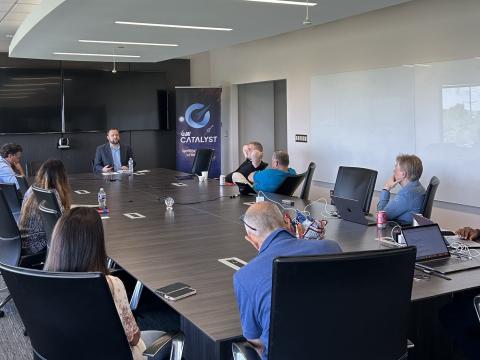The Verdict is in: GIG is Essential
"The reality is that the world has already converged out from under us and gone in this direction." --David Mihelcic, CTO, DISA
Seven panelists discussed whether the GIG is a fad or reality during MILCOM's first session this morning. At the conclusion of the session, all concurred that not only is the GIG a reality but it has moved beyond its initial objectives and has become the epitome of convergence. Each panelist described the activities of his own organization, which demonstrated that the GIG has indeed diverged from the original intent and now is converging additional capabilities as they become available. "The reality is that the world has already converged out from under us and gone in this direction," stated David Mihelcic, CTO, DISA. The benefits of converging are many, he added, and include the opportunities to save money, gain efficiencies, improve interoperability and increase information sharing. The issues that must be resolved to bring this about involve quality of service, prioritization of services, reliability and information assurance, he admitted. To address these issues, DISA is now in the process of updating its GIG Convergence Master Plan, a plan that was born four years ago, Mihelcic added. Michael Redgraves from the NSA chimed in that not only is the GIG a reality but the military has moved on to what he termed GIG 2.0. Emerging capabilities are creating a unity of command, but one of his agency's primary concerns is the information assurance piece of the grid. "One of the changes in the DOD and the intelligence community is that people are starting to recognize that information assurance is really important. It's become more important as a command cross-over requirement. If a commander comes in and says he needs to move this information through this environment to these people, we can help him do that," Redgraves noted. Representing the work at the U.S. Army Research and Development Command, Henry J. Muller Jr. pointed out that the service used to focus on the Future Combat Systems program and the future but now must concentrate more on spending funds wisely. Among the issues that must be addressed are spectrum efficiency, information assurance in terms of getting out in front of the threats, and network management. The command's Communications and Networks Technology Roadmap describes its goals in the areas of wireless transportation of data, mobile networking, cybersecurity, antennas and network operations, he shared. "It is a system of systems engineering strategy," Muller explained. At the Naval Network Warfare Command, the GIG is not only a reality it is essential, said Capt. Douglas Swanson, USN. It is critical to the quality of decision making and information assurance and saves the service money. Today, the Navy enjoys the benefits that the NMCI has brought about, but the next step is NGEN-the next generation network, Capt. Swanson allowed. As the service moves further into the future, it will flatten this network even more and will use common tools and processes, he stated.




Comments